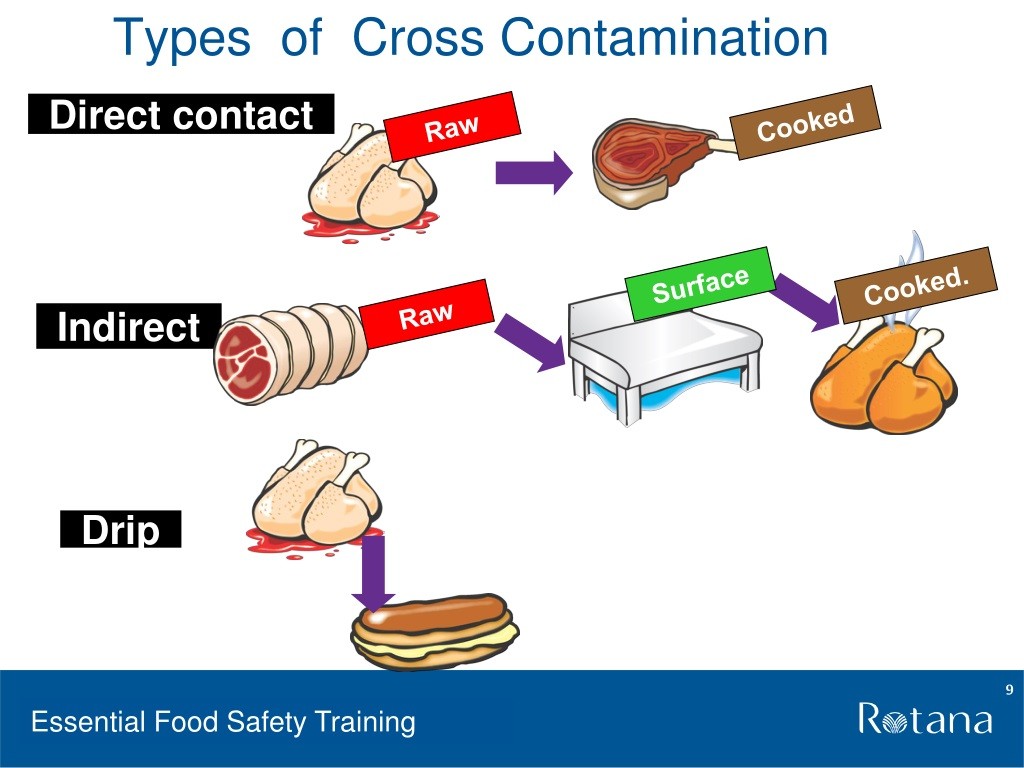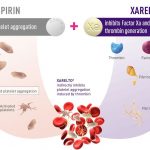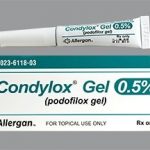
Types of Cross-Contamination and How To Prevent Them
Cross-contamination is the spread of bacteria, viruses, and harmful components from one surface to another. Types include food-to-food, people-to-food, and equipment-to-food. To prevent it, follow good practices when shopping, storing, cooking, and transporting food.
Cross-contamination, the transmission of bacteria, toxins, and contaminants to foods, is a leading cause of food poisoning. However, it’s easy to avoid with the right habits. Here’s what you need to know.
Cross-contamination is the spread of bacteria, viruses, and harmful components from one surface to another. Usually, this transfer happens due to not disinfecting and sterilizing surfaces and equipment. While any surface can be contaminated, the biggest concern is cross-contaminating foods.
To understand cross-contamination, imagine cutting raw chicken. Raw meat contains contaminants, most of which are removed when cooked. However, these contaminants can remain on the knife’s surface for a long time. If you use the same knife to cut a vegetable that won’t be cooked, you risk eating active contaminants.
Eating these contaminants can lead to foodborne illness. Each year, there are an estimated 48 million cases of foodborne illness in the United States, resulting in about 3,000 deaths.
Cross-contamination can be prevented by following good food safety practices. These include washing hands and surfaces often, using separate cutting boards for raw meat, vegetables, and cooked food, and cooking meat to the proper temperature. However, the greatest danger comes from cross-contamination before food reaches your hands.
What harmful components can be transmitted through cross-contamination?
Many contaminants can be transmitted from surface to surface. From bacteria to allergens, the degree of danger varies based on the person and the contaminants present.
The most common contaminants involved in cross-contamination are bacteria and viruses. Parasites such as protozoa and tapeworms can also be spread. Less common is the cross-contamination of toxins and molds, which contain chemical and natural toxins.
Allergens can also spread through cross-contamination. For example, a peanut allergy may be triggered by other foods that were near peanuts. Allergen-related cross-contamination requires extreme care for those with allergies.
What are the different types of cross-contamination?
There are three types of cross-contamination in food — food-to-food, people-to-food, and equipment-to-food. While not all are under your control, it’s important to know how each can happen and their consequences.
Food-to-food
This type involves food-to-food contact. For example, if you place a vegetable near a raw steak and they touch, the vegetable can be contaminated. Similar occurrences may happen in the fridge, where a dripping piece of raw meat may leak contaminated liquid onto another food.
People-to-food
This form involves people-to-food transmission. People can transfer contaminants from one food to another in many ways, such as not washing their hands or disinfecting after handling raw meats. Avoiding this at home is easier than in other facilities.
Equipment-to-food
This type is similar to people-to-food cross-contamination. By not cleaning knives, cutting boards, and utensils between each use, contaminants can be transferred from one food to another.
What happens if I eat cross-contaminated food?
Cross-contamination can cause a range of symptoms and side effects, including vomiting and dehydration. Specific symptoms vary due to the number and type of contaminants. Treatment may involve prescribing medications or allowing the body to recover naturally.
In severe cases, hospitalization may be required to address dehydration and malnourishment caused by severe diarrhea and vomiting.
QUESTION
How can I prevent cross-contamination?
Preventing cross-contamination requires ingrained habits in your cooking space throughout shopping, storing, cooking, and transporting.
Shopping
Handle raw meat, poultry, and eggs with care at the grocery store to avoid leakage and contact with non-cooked foods. Take the following steps:
- Place these foods in separate bags to avoid leakage
- Use separate shopping bags for possibly-contaminating foods
- Store groceries in different places, such as the trunk and back seat of your car
Storing
Store foods as soon as possible after getting home to prevent cross-contamination and food poisoning. Keep eggs away from other foods, store ready-to-eat foods separately, and place meat, poultry, and seafood at the bottom of the fridge.
- Keep eggs away from other foods in their original carton
- Store fruits, vegetables, and ready-to-eat foods in separate containers
- Place meat, poultry, and seafood on the bottom of the fridge to avoid leaks
Cooking
Disinfect and prevent cross-contamination during the cooking process. Wash hands before, during, and after handling raw meats, separate utensils for raw and ready-to-go foods, and regularly clean surfaces.
- Wash hands before, during, and after handling raw meats and foods
- Separate knives, cutting boards, and utensils for raw and ready-to-go foods
- Clean and disinfect surfaces regularly
Transporting
Properly transport food in lunch boxes and Tupperware. Correctly following all stages will prevent 85% of foodborne illnesses.
- Clean lunch boxes and Tupperware after every use
- Use cold packs and thermal containers when necessary
- Wash containers that stored contaminant foods before reusing
Sources:
American Family Physician: "Diagnosis and Management of Foodborne Illness."
Boulder County Public Health: "Cross Contamination."
Centers for Disease Control and Prevention: "Body Art: Reduce Cross-Contamination," "Food Safety Education Month."
EatRight: "4 Simple Steps to Keep Food Safe."
FoodSafety: "Food Poisoning."


